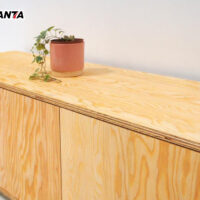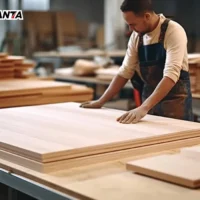Table of contents
What Is MDF?
MDF stands for Medium Density Fiberboard. It is an engineered wood product made by breaking down hardwood or softwood residuals into wood fibers. These fibers are then combined with wax and resin, and compressed under high temperature and pressure to form dense, smooth panels. Unlike natural wood, MDF has no visible grain, which gives it a consistent surface perfect for painting and finishing.
MDF Wall panels can instantly elevate the look and feel of any space, offering a blend of functionality and aesthetic appeal. Among the many materials available for wall paneling, Medium Density Fiberboard (MDF) has gained popularity for its versatility and affordability. But is MDF really a good choice for wall panels? In this article, we explore the pros and cons of using MDF, where it works best, and what to consider before making your decision.
Benefits of Using MDF for Wall Panels
1. Smooth and Uniform Surface
MDF has a smooth surface that makes it ideal for painting and applying decorative finishes. Unlike plywood or natural wood, MDF does not have knots or imperfections, ensuring a sleek, professional appearance for wall panels.
2. Affordability
One of the biggest advantages of MDF is its cost. It is significantly cheaper than solid wood and even many types of plywood, making it an excellent option for budget-friendly interior upgrades.
3. Easy to Work With
MDF is easy to cut, shape, and install. You can use standard woodworking tools to customize MDF panels to fit any design. Whether you’re adding wainscoting, beadboard, or full-wall paneling, MDF adapts to your creative vision.
4. Environmentally Friendly Option
Manufacturers often use recycled wood fibers to produce MDF, making it a more sustainable option compared to cutting down trees for solid wood panels.

Drawbacks of MDF Wall Panels
1. Moisture Sensitivity
MDF does not perform well in high-humidity or damp areas. It can swell or warp when exposed to moisture, so it’s not suitable for bathrooms, kitchens, or basements unless sealed properly.
2. Not as Strong as Solid Wood
While MDF is durable enough for most interior applications, it lacks the strength and structural integrity of solid wood. It can crack or split under heavy impact or when over-tightened with screws.
3. Heavier Than Plywood
Despite its low cost, MDF tends to be heavier than plywood, which may complicate installation for larger panels.
Best Applications for MDF Wall Panels
MDF works well in dry, climate-controlled environments. Consider using it for:
- Living rooms: Add elegance with MDF wainscoting or decorative panels.
- Bedrooms: Create accent walls with painted or carved MDF panels.
- Offices and studies: MDF panels offer a clean, refined look that enhances productivity and style.
Tips for Installing MDF Wall Panels
- Seal the edges: MDF edges absorb moisture easily. Apply primer or sealant before painting to protect the panels.
- Use the right fasteners: Choose screws designed for MDF to avoid splitting.
- Plan for expansion: Leave a small gap between panels and moldings to accommodate slight expansion due to temperature changes.
Conclusion
So, is MDF good for wall panels? Absolutely—if used in the right conditions. Its affordability, smooth finish, and ease of installation make it an excellent choice for many interior design projects. However, avoid using MDF in damp or high-traffic areas where durability and moisture resistance are critical. With proper planning and installation, MDF wall panels can add beauty and value to your home without breaking the bank.
Articles you may be interested in.























1 Comment